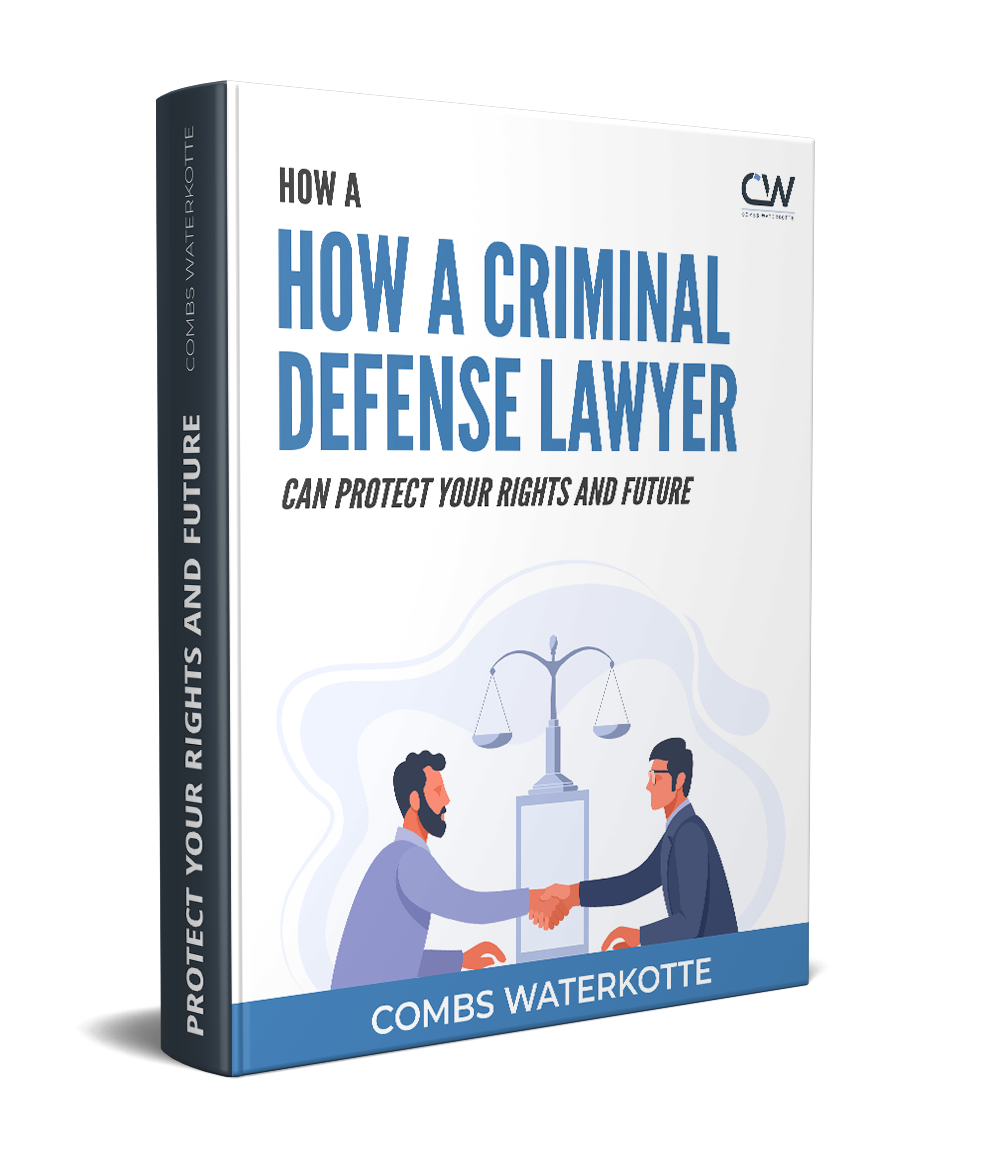Additional Links
- Criminal Lawyers With Payment Plans
- Missouri Criminal Defense Resources
- What to Do if You’re Arrested for Assault
- How Prior Convictions Impact Assault Charges
- Understanding Violent Crime Defense
- Choosing the Right Violent Crime Defense Attorney
- Exploring Different Types of Assault Charges and Their Defenses
- Legal Books
- Legal Videos
- Defending Freedom Podcast

What Is Aggravated Assault in Missouri?
Unlike many states, Missouri doesn’t have a crime known as “aggravated assault.” Instead, the state has four degrees of assault, with first-degree assault as the most serious charge and fourth-degree assault as the least serious.
Traditionally, the crime of battery included any intentional and unlawful use of force that resulted in harmful or offensive contact. Assault, meanwhile, included any attempted battery or intentional act that caused the victim to fear imminent battery.
Your future is on the line. Call Combs Waterkotte's St. Louis aggravated assault lawyers at (314) 900-HELP for an immediate consultation.

Missouri’s statutes merged the criminal offenses of assault and battery. Under Missouri law, first, second, and third-degree assault roughly correspond to common law battery. Fourth-degree assault includes common law assault and offensive, rather than harmful, common law battery.
Thus, the three most severe degrees of assault under Missouri law could be viewed as aggravated assaults. These violent crimes are punished more harshly because they involve various combinations of the following elements:
- Intent to murder or seriously injure the victim
- Serious physical injury to the victim
- Use of a weapon by the accused
- A victim who has special legal protection, such as an elderly person or police officer
These levels of assault are treated as felonies, meaning a conviction will result in a felony criminal record. Moreover, the sentence could include significant prison time and fines.

Missouri Aggravated Assault Statutes
The Missouri Revised Statutes include assault in the chapter on Offenses Against the Person. The three levels of felony assault are set out in the following three statutes:
First-Degree Assault
First-degree assault is roughly equivalent to felonious or aggravated assault in other states. This level of assault occurs under three circumstances:
- Attempting to kill
- Knowingly causing serious physical injury
- Attempting to cause serious physical injury
To prove that you attempted to kill the victim, the prosecution must show that you had the specific intent to kill. In other words, if you only intended to harm or frighten the victim, the prosecution can’t meet all the elements for the first type of first-degree assault.
The second two elements depend on the definitions of “knowingly” and “serious physical injury.” Prosecutors can prove that you acted knowingly by arguing that:
- You were aware of the nature of your conduct
- You were aware that your conduct was practically certain to seriously injure the victim
Serious physical injuries create a substantial risk of any of the following:
- Death
- Serious disfigurement
- Protracted loss or impairment of the function of any part of the body
By combining these definitions, prosecutors must prove that you knew your actions created a substantial risk of any such results and that you caused or intended to cause such an injury.
Second-Degree Assault
Second-degree assault covers the following acts:
- Attempting to kill under sudden passion arising from an adequate cause
- Knowingly causing or attempting to cause serious physical injury under sudden passion
- Knowingly causing or attempting to cause physical injury using a deadly weapon or dangerous instrument
- Recklessly causing serious physical injury
- Recklessly causing physical injury by discharging a firearm
This statute introduces several new terms. “Sudden passion” means the victim provoked the accused at the time of the offense. You and your aggravated assault lawyer must raise the issue of sudden passion to use it as a viable defense.
Deadly weapons include the following:
- Loaded or unloaded firearms
- Switchblades
- Daggers
- Billy clubs
- Blackjacks
- Metal knuckles
A gun is considered a “deadly weapon” even if you can carry it legally without committing a gun crime.
“Dangerous instruments” include any object or substance that’s capable of producing death or serious physical injury. Examples include poisons, vehicles, baseball bats, and other devices that aren’t weapons but can still injure or kill.
Finally, second-degree assault includes reckless acts. Recklessness occurs when the accused consciously disregards a substantial and unjustifiable risk of physical injury. Moreover, prosecutors must show that the level of disregard is a gross deviation from the standard of reasonable care.
Consequently, recklessness requires you to willfully blind yourself to an apparent risk. For example, throwing rocks off a highway overpass might involve the level of conscious disregard required.
Third-Degree Assault
Third-degree assault happens when the accused knowingly causes a physical injury, which includes any harm that even slightly impairs a bodily function or causes temporary loss of use of a body part. Based on this definition, a laceration, bruise, or fracture would likely qualify as a physical injury.
This definition distinguishes harmful contact from offensive contact. If contact causes physical harm, it typically falls under third-degree assault. If it offends the victim or causes emotional harm, it usually falls under fourth-degree assault.
Defenses to Aggravated Assault Charges in St. Louis, MO
Defenses to aggravated assault can arise from the nature of the alleged attack as well as the circumstances leading up to it. We often use the following criminal defense strategies in assault cases:
Self-Defense and Defense of Others
Missouri law allows you to use force, including deadly force, if you reasonably believe it’s necessary to defend yourself or another person from force or the imminent use of force. Your belief must be reasonable, and your actions must be proportional to the threat.
Even if you were the initial aggressor, you may still invoke self-defense — but only if you clearly withdrew from the encounter and the other person continued to use or threaten force.
Defense of Property
You may also use force to protect your property. To raise this defense, your lawyer must show that you believed it was necessary to stop someone from stealing, damaging, or tampering with your belongings.
Lack of Intent
Aggravated assault charges require at least recklessness, and often knowledge. If you didn’t act knowingly — or if what occurred was accidental — we may argue that your mental state didn’t meet the legal standard for a conviction.
For example, if you injured someone with a weapon, we may argue that the incident was due to careless handling rather than an intentional act.
Consent
Consent is often given in contact sports, such as boxing or martial arts. It can also arise when the victim and accused perpetrator engage in consensual violent acts, such as certain forms of sexual activity.
To raise a consent defense, you must show that:
- The consented act didn’t cause a serious physical injury, or
- The act and injury were reasonably foreseeable hazards of an occupation or sport
Since consent is an affirmative defense, you’ll need evidence to support it.



























